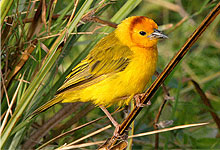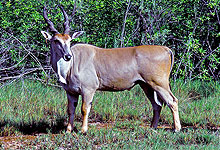Hallar Park Mombasa
| Bamburi Nature
Trail Day
Trip
Guided
Educational Tour to a Sanctuary for Lost and Orphaned
Wild Animals Situated Opposite the Entrance to the
Bamburi Beach Hotel Mombasa
(Haller
Park Mombasa, formerly known as the Bamburi Nature
trail, is located 12 Kilometers just past the Kenyatta
Public beach (nearly opposite Nakumatt Supermarket)
next to the Bamburi Cement factory North of Mombasa
along the Mombasa Malindi road. Haller Park is only
a 25 Minutes drive from Mombasa Town)
Bamburi
Nature Trail Park (Haller Park)
(Half
Day Mombasa Island Tour)
Bamburi
Quarry Nature Trail Tour View
Rates, Discounted Prices - Book & Save Now!
Bamburi
Quarry Nature Trail Day Tour departs in the
morning from your hotel or after lunch to the Bamburi
Quarry Nature Trail.
You
will enjoy Kenya’s nature during a walk through
Haller Park (Bamburi Nature Trail). This Natural Sanctuary
is home for wild animals, different species of birds
and other tropical flora.
Eland
and buffalo, crocodiles and other reptiles can be
seen wandering with crowned cranes. Other attractions
in the Park include porcupines, peacocks, a snake
park, fish farm, crocodile farm, giraffes, zebras,
famous giant tortoises, hippos and a restaurant that
specializes in game meat. Pre arranged tree planting
at the nature trail with certificates is also possible.
Get
up close and personal with giant Aldabra Tortoises,
Hippos, Crocodiles, Waterbuck, Elands and Buffalo.
Their highly trained guides will escort you around
the park, ensuring your visit is enjoyable and educational.
If
you have read the story about Owen (the hippo) and
Mzee (the tortoise), you can meet them there. Haller
Park is open from 800 Hours to 1700 Hours every day,
including public holidays.

Haller
Park - Taveta
Golden
Weaver bird |

Nature
Trail of Bamburi - From Wasteland to Paradise
|

Haller
Park - Bamburi Nature Trail, Mombasa
|
Bamburi
Nature Trail Park Day Tour (Haller Park)
Rates
Dates
From |
Dates
To |
Price
Per Person |
1st
Jan 2015 |
31st
Dec 2015 |
Request
for Rates |
Notes
* Bamburi
Quarry Nature Trail Tour Prices include roun d trip
transportation and all entrance fees to the Park
Accepted
Mode of Payment

Haller
Park/ Bamburi Quarry Nature Trail
Information
Haller
Park is the largest animal sanctuary in Mombasa. Located
next to the Bamburi Cement Factory, the Park boasts
an enormous variety of animals, reptiles, insects
and botanical gardens.
Walking
along the trail is the ideal way to look at the various
animals, and on many occasions holding or feeding
a reptile such as a snake is allowed under close supervision
of a guide.
Educational
videos are also shown, with emphasis on the history
and continuous improvement of the trail. It was previously
a barren piece of land that had been stripped of its
resources through limestone mining, and was redeveloped
through reforestation and conservation efforts, and
is now a habitat for a large number of flora and fauna
species.
Sally
& Potty, the Hippos
Sally
was reared as an orphan by wildlife filmmakers and
Joan Root in Naivasha. In 1976, when she was 4 years
old, she was brought to Haller Park Trail. She is
now around 20+ years old and weighs probably 1 - 1.5
tons.
Potty
was confiscated from a German zoo, because he was
not kept properly, and transferred to Nature Trail
in November 1986. He probably weighs between 1.5 -
2 tons.
These
hippos mainly feed on soft grass, herbs and fallen
fruits. Hippos mainly stay in the water during the
daytime, which protects their soft skin from the hot
sun, and they feed on land during the night.
Defecating
mainly in the water, they fertilize the pond and enhance
algae growth and fish production. Hippos mature at
3 - 5 years, have a gestation period of 18 months
and live around 40 - 45 years.
Haller
Park
or Bamburi Quarry Nature Trail, Mombasa
A
variety of game animals and birds, which are not so
easily seen, inhabit the fenced area. Each has a function
in Nature Trail's ecosystem, and almost all of them
utilize a different feeding niche. The mammal species
seen are hippos, giraffes, buffalos, zebras, waterbucks,
elands and Oryx.
The
bushbuck, suni and duiker are not easily seen as tend
to scamper away upon hearing any sounds. The animals
most active at night are: bush pig, marsh mongoose
and serval cat.
Below
are profiles of famous Animals at the Wildlife Sanctuary:
Cape
Buffalo
Cape
Buffalos are African buffalos, and not water buffalos.
There are 2 females, one who is fully grown, and the
other who was born in Nature Trail in May 1990.
These
buffalos feed on grass, coarse grass, herbs and leaves.
African buffalos mature at 3 years, have a gestation
period of 11 months and live around 25 years
Waterbuck
There
are at present, group of 7 animals, 1 adult male,
4 adult females, 1 male and 1 female calf. Waterbuck
mostly feed on grass, herb and leaves. Waterbucks
mature at 13 - 14 month, have a gestation period of
9 months, and live up to 18 years.
Eland
There
are at present a group of 1 male, 2 adult females,
2 calves. Herd of 20 - 25 elands are domesticated
at Bamburi Forestry.
They
are herded and culled for meat Eland normally feed
on leaves of trees and bushes, grass and herbs. They
mature at about 1.5 - 2 years, have a gestation period
of 8.5 - 9 months and live 15 - 20 years.
Oryx
There
are at present a group of 1 male, 1 adult female and
1 calf. Herd of 50 - 60 Oryxes are domesticated at
Bamburi Forestry. They are herded and culled for meat.
Oryxes
are extremely adapted to life in dry, poor rainfall
areas. They feed on grass (coarse and dry), ground
fruits, and tuber. They need extremely little water.
Oryxes' mature at 1.5 - 2 years; have a gestation
period 8 months and live 19 - 22 years.
Birds
There
are more than 160 bird species recorded to date. Some
species that were introduced to Nature Trail are:
Crested crane, marabou stork, yellow billed stork,
pelican and Egyptian geese.
Bird
species frequently seen in the Game Sanctuary: Gray
heron, black heron, great white egret, little egret
yellow-billed egret, sacred ibis plovers, white-faced
tree ducks (seasonal), African fish eagle and pied
kingfisher and malachite kingfisher.
Weaver
Birds
There
are 3 main types of weaver birds: the Taveta golden
weaver, black-headed weaver and golden palm weaver
Porcupine The South African Crested Porcupines are
active at night, and are rarely seen during the day.
They
hide in burrows, rock cavities, and boulder heaps.
When threatened, they stamp with their hind feet and
hurl quills. They mature at 2 years and live up to
20 years.
Crocodiles
The
crocodiles are the original parent stock of the crocodile
farm, which consisted of 6 females and 1 male. These
crocodiles were introduced from Lake Turkana and Tana
River as eggs and hatchlings in 1975.
There
started laying eggs in 1984 At Nature Trail, crocodile
eggs are collected right after they are laid and are
incubated artificially.
Thus,
there are better hatching rates and minimal loss;
sex ratio of hatchlings can be controlled by incubation
temperatures and hatchlings can be looked after optimally
Crocodiles start laying eggs at 8 - 10 years, and
live up to 80 years.
Aldabra
Tortoises —
The tortoises at Haller Park trail
are from Aldabra atoll in the Indian Ocean. They were
collected from people who kept them as pets. Some
were washed ashore.
The
biggest and oldest tortoise is over 100 years. These
tortoises are very similar to the Galapagos Tortoises
but are of a different species.
They
feed mostly on vegetation, but will eat almost anything.
They lay eggs in excavated nest pits, and the young
need no parental care. At Nature Trail, despite frequent
mating, there have been no offspring's. Tortoises
have known to live up to 200 years.
Monkeys
The
monkeys found at Nature Trail are from an orphan group
and their offspring are from hybrids. These species
are
*
Mona Monkey
*
Sykes Monkey
Bamburi
Quarry Nature Trail Reforestation Project
Before
the Reforestation project, the vegetation and soil
were in terrible condition. There was bare coral rock
with almost no soil and no shade. The ground water
was mostly saline.
Salinity
has decreased over the years since the ground is covered
with soil and vegetation that absorbs the heat; the
soil also holds back the moisture. The following vegetation
can now be found in plenty:
Caesarian
They
come originally from Australia, but occur naturally
along the East African coast. They can tolerate saline
water and are well adapted to dry areas. Their leaves,
which look like pine needles, are adapted to minimize
water loss.
The
"needles" are actually green branches, with
a very thick skin, and the leaves themselves, are
reduced to small scales arranged in a row at each
node of the "needles"
The
Caesarians are well adapted to live on poor substrate:
microorganisms living in its roots that help the Caesarian
utilize nitrogen from the air. Other microorganisms
dissolve other nutrients from the surrounding rocks,
and make them available to the Caesarian tree as nutrients.
Caesarian
needles decompose very slowly. Due to their high tannin
content, they are difficult for bacteria to break
down. Red-legged millipedes were introduced, because
they feed on dead Caesarian needles, and bacteria
much easily break down their droppings.
The
millipedes speed up humus formation. Thus far a humus
layer of over 4 inches has been built up on the coral
rock. Caesarians are used as poles for house construction,
dhow masts, charcoal, and firewood.
Monocarps
Trees
The
Monocarps were introduced from Somalia. They tolerate
saline ground-water and are drought tolerant. They
need some soil to start, and were most successful
when interplanted with Caesarians The wood is used
for dhow building and charcoal.
Algaroba
Trees
The
Algaroba was introduced from South America. They are
drought tolerant and, also tolerate some salinity
in the water. The microorganisms in the root system
help provide nutrients.
They are planted mainly on the quarry slopes. The
Algaroba flowers attract bees in large numbers and
the seedpods are used as animal feed.
Neem
Trees
Fruit
bats distribute the neem tree seeds. Neem is used
as medicines for the treatment against malaria and
skin diseases. They can be used as an insect repellant
and insecticide.
Fig
Trees
Fruit
bats and monkeys distribute the fig tree seeds. The
four fig species are common, the most common one being
Ficus Sycomorus, in Kiswahili called the mkuyu tree.
Fig
trees often germinate at quite impossible places,
like on rocks or on other trees.
They
produce long air-roots, growing down towards the soil
and becoming proper roots once they reach the soil.
They grow so vigorously once they reach the soil,
that they strangle and kill their host tree on which
they germinated.
Indigenous
Species
Many
species of indigenous coastal forest and timber trees
are being planted to find the ones most suitable and
to eventually replace the Caesarian and Cornacapus
trees. These trees are Mvule, Mbambakofi, Mgurure.
